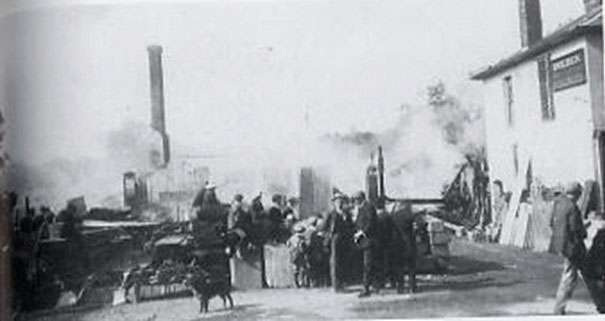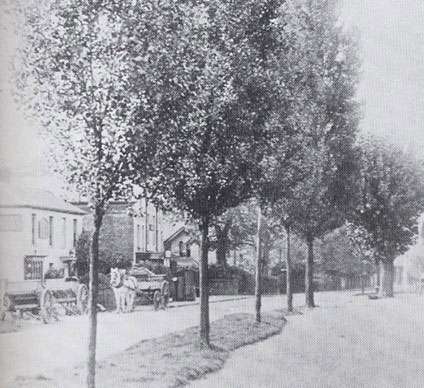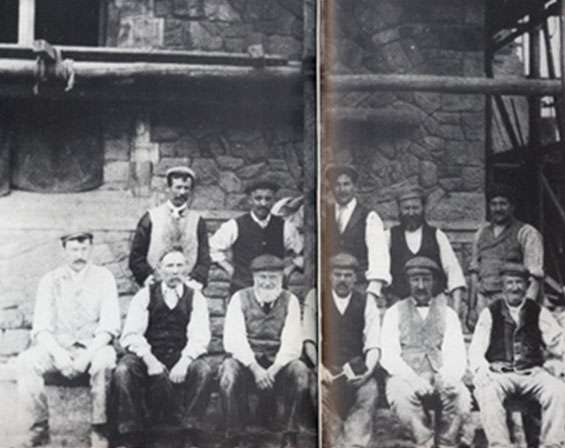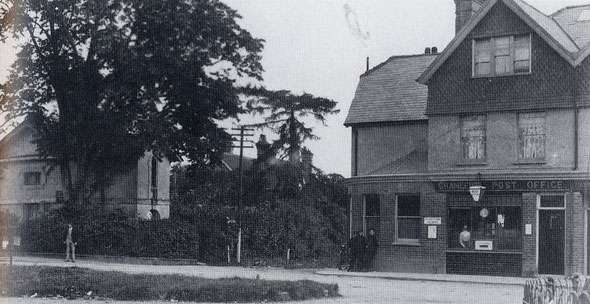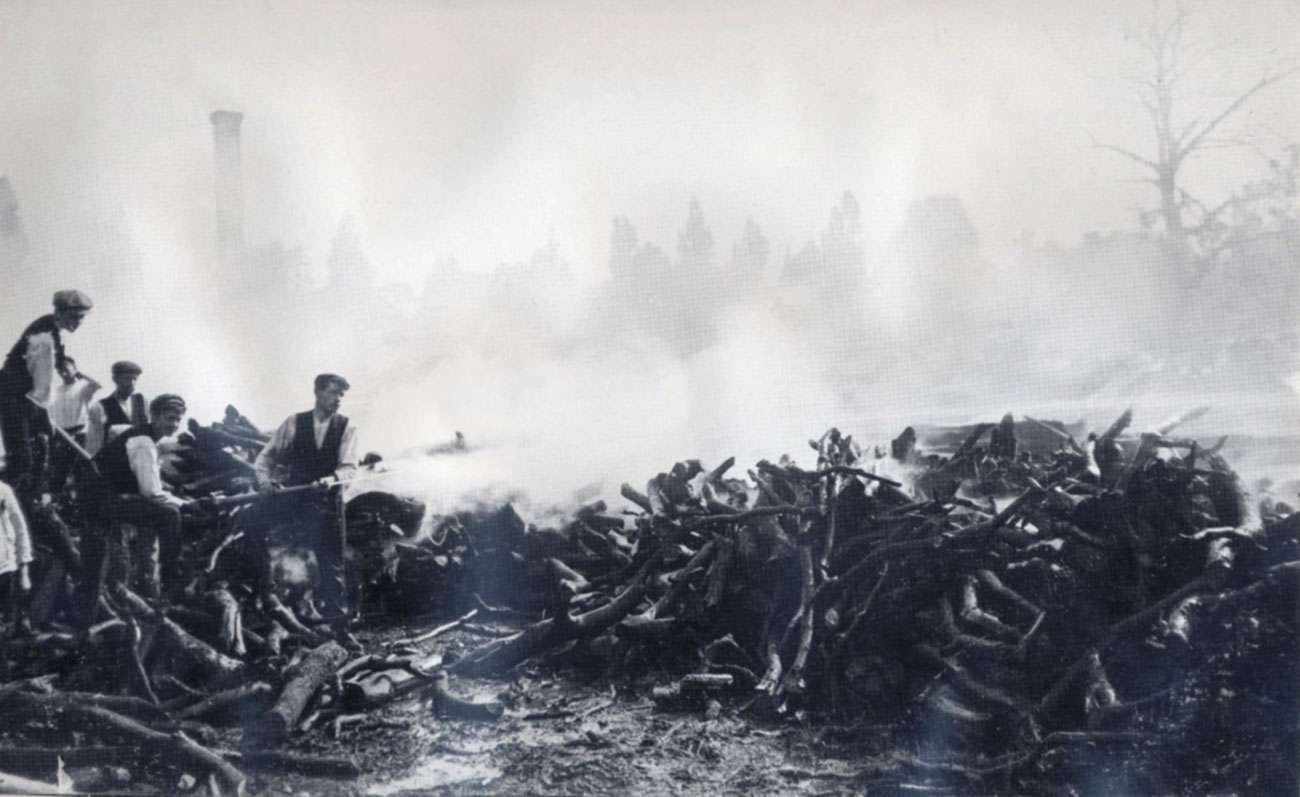
Around 1900 the biggest employer in Cranleigh was Holden’s timber and building firm. It had been established about 1815, when a young carpenter called George Holden came here from Wisborough Green. By now, the third generation of Holdens, brothers James and Ebenezer, were in charge of the large yard (1¾ acres) in the centre of the village, on the site of M&S Simply Food. There was a timber yard, building stores, joinery shop, plumber’s shop, painter’s shop, stables and a steam saw mill. 130 men were employed here. They specialised in local oak, and exported church bell frames to Russia and Australia.
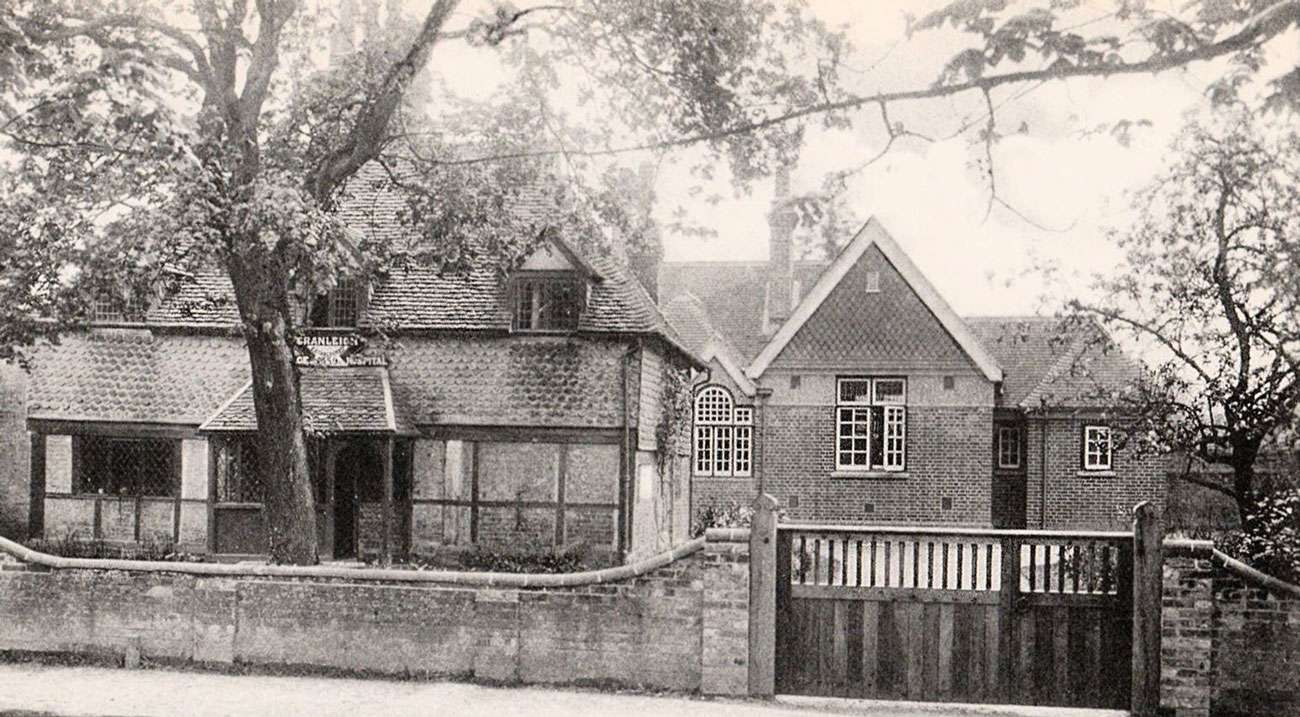
Hospital with 1902 extension, in 1907 (photo by H.U. Knight, of ‘The Studio’, close to the Obelisk, courtesy of Mrs Vera Wilkinson) First Photo: Playing on the flames (photo by H.U. Knight, in the Surrey Advertiser)
In 1906, Holden’s had just completed two prestigious Cranleigh commissions – two new wards and an operating theatre at the Village Hospital, the first alterations since it was opened in 1859, and building the Wesleyan Methodist church, facing the Common.
After the fire (photo by H.U. Knight)
Fire broke out on the night of June 22nd in the boiler room, perhaps from a spark igniting some shavings. No night-watchman was employed, but when the local policeman passed the premises at 2.55, all was apparently well. The fire was spotted shortly after 3.00am by Mrs Dubbins of the ‘Greyhound’ public house opposite (on the site of the present Post Office), and she raised the alarm. With so much wood stored there, the fire took hold quickly. The new telephone exchange at the Post Office operated only from 7.00am to 8pm, and was not staffed at night. So her son set off on his bicycle to summon the Guildford fire brigade. It took him an hour to get there, and then the Guildford appliance, or ‘steamer’ (its pumps were worked by steam), hurried to Cranleigh as fast as the horses could pull it, taking another hour.
Two carts and a wagon in the Street outside Holden’s yard before 1906
Meanwhile, the recently-formed Cranleigh volunteer fire brigade assembled with their hose pipes (their only equipment), but soon discovered that these were not long enough to reach the water mains. Nearly all Holden’s workmen arrived on the scene, and formed chains to pass buckets of water, some of it from Dr Napper’s garden pond at Broadoak. The houses and shops in the Street to the west of the yard were seriously threatened, and their furniture was carried outside as a precaution. In the stables were six horses and two ponies, which were rescued just as the stables were beginning to burn. Three wagons, two vans, four carts and two light traps, however, could not be saved. What was probably the largest stock of oak and deal in Surrey was destroyed.
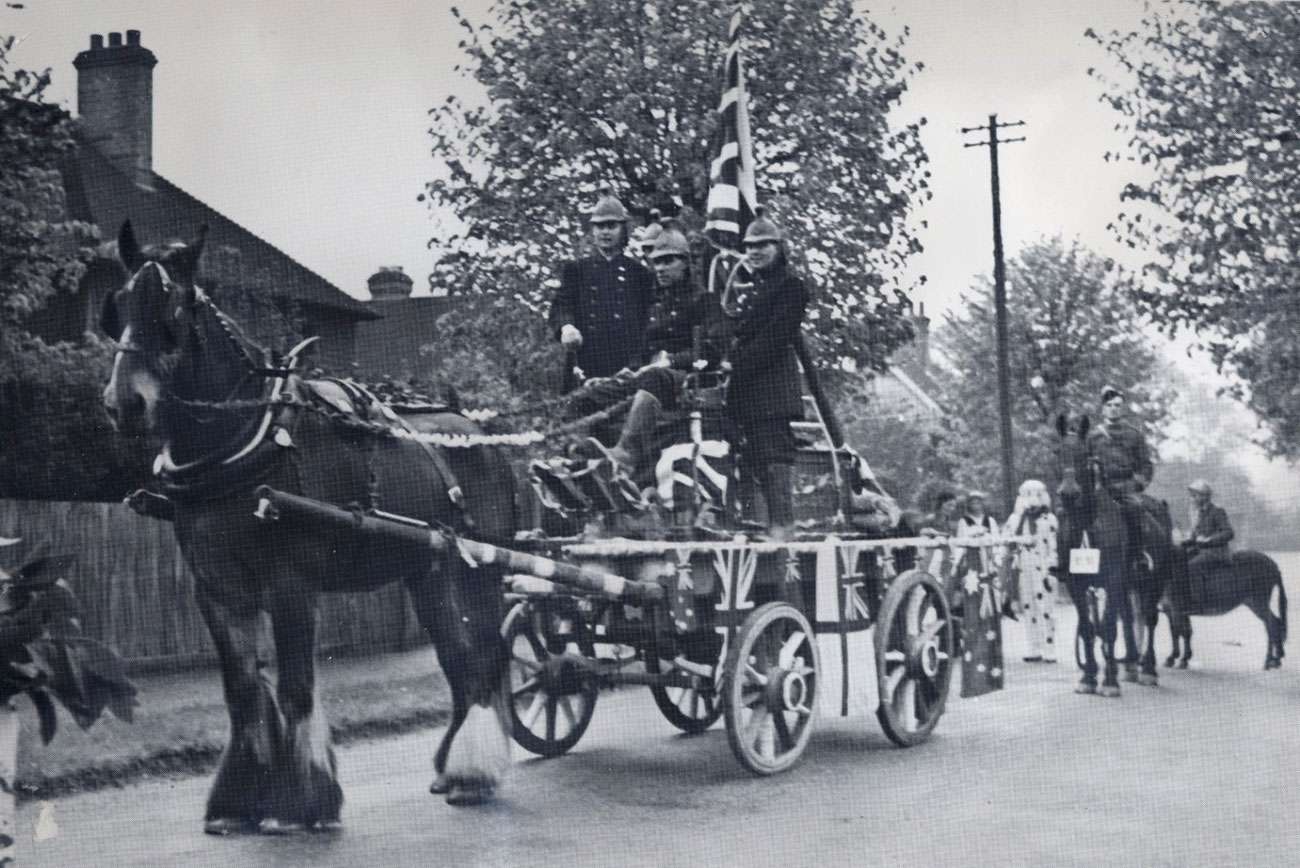
Old fire appliance displayed at Cranleigh Carnival, 1930
The delay in the arrival of the Guildford fire appliance greatly increased the fire damage. Stock worth £1,000 was salvaged, but most of the buildings were destroyed, representing £10,000-worth of loss. Worse still, they were uninsured. The employees’ tools, which were their personal property, were also lost in the fire, taking away their means of livelihood.
Building the Wesleyan Methodist church in 1904 (B. Seymour & M. Warrington, Bygone Cranleigh (1984)): some of these men probably lost their tools in the Holden’s fire
Immediately, a fund was set up for the workmen by the Baptist minister, Charles Barringer, with Walter Briggs, who ran a large draper’s shop next to Holden’s yard. Generous contributions came in quickly. The men were issued with tokens, which they could exchange at David Mann’s ironmonger’s store. A catastrophe was averted.
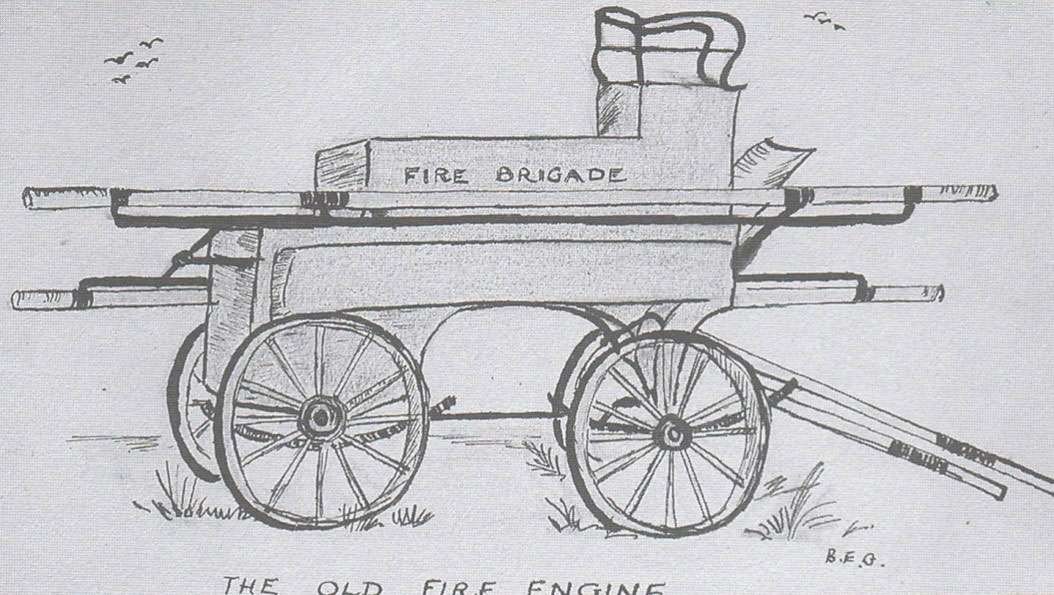
Drawing of horse-drawn pump bought in 1912 (Budgen, Cranleigh: a History)
The Hambledon Rural District Council had previously shelved the question of adequate equipment for the volunteer fire brigade, but the fire made the need very obvious. By 1912, a basic horse-drawn pump was bought, and the men were equipped with helmets and uniforms. A petition was also circulated, calling for a better night-time telephone service, and the Cranleigh Directory of 1910 could report that the telephone service was now ‘continuous’. So two good results followed the fire.
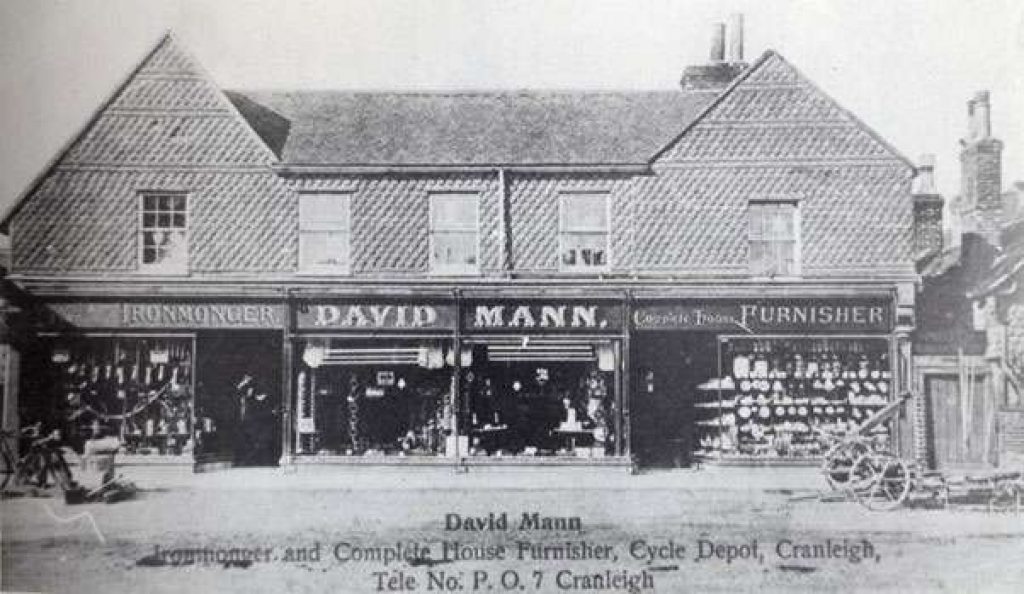
David Mann’s in 1910, where tokens could be exchanged for tools
The following year, Holden’s firm did not figure in Kelly’s Directory, but Ebenezer Holden was listed, rather ironically, as an insurance agent. The brothers seem to have worked separately after the fire. The building firm recovered to some extent, and in 1908, James Holden’s workmen had the job of re-shingling the church tower.
The Post Office, at the head of Knowle Lane, in 1910: the left-hand part is the telephone exchange and the lounging boys are in fact waiting to deliver telegrams by bicycle (postcard courtesy of Roy Pobgee)
The Cranleigh Directory of 1910 listed Ebenezer as captain of the fire brigade, and ran an advert for James, describing him as ‘contractor, decorator, plumber, undertaker, brick and tile manufacturer’. Within a dozen years, though, the building firm of Warren’s had taken over the yard. The glory days of Holden’s came to an end with the fire.
The Cranleigh History Society plans to resume its monthly meetings in the Band Room as soon as the Covid-19 regulations permit.

